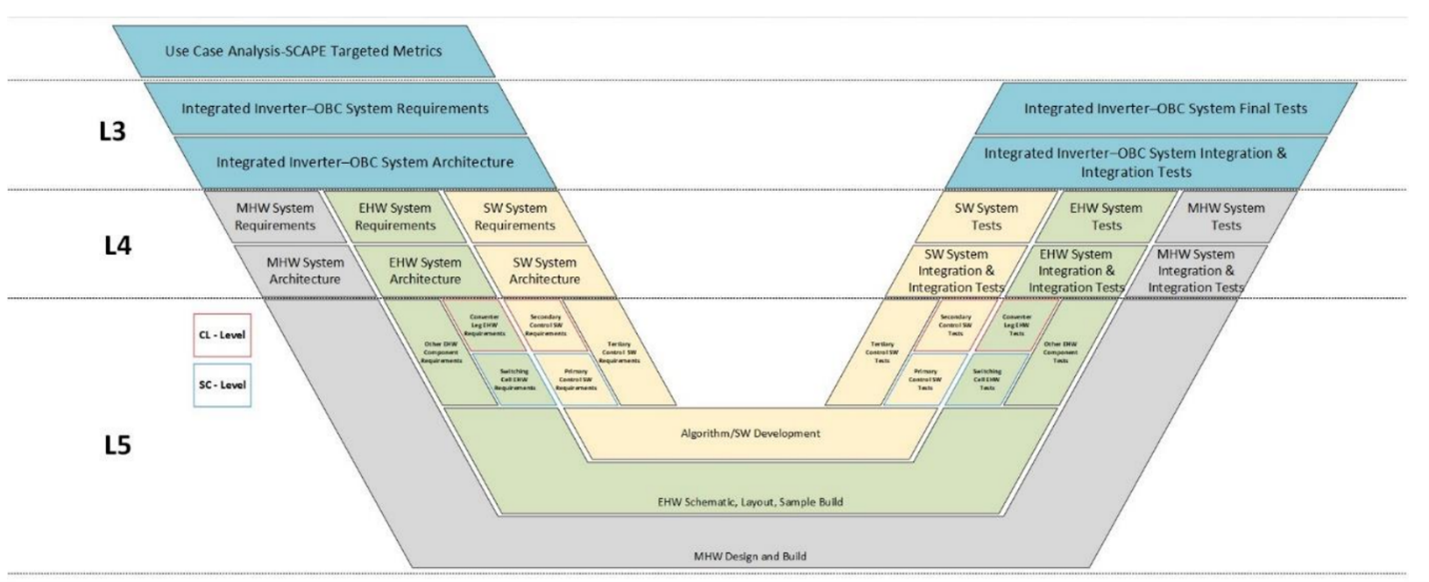Refining Requirements: SCAPE’s Dynamic Framework
WP2, led by AVL-TR, plays a crucial role in the SCAPE project by spearheading the requirement engineering efforts. Over the first two years, WP2 has successfully developed a comprehensive collaboration method, defined use cases, system requirements, test cases, and conducted gap analyses. The collaboration method, meticulously crafted with input from all project partners, introduces a tailored V-cycle development process specifically for SCAPE. This process deviates from conventional industrial steps, instead offering a more flexible and efficient framework that ensures thorough and effective outcomes.

Through detailed use case analysis, WP2 has gathered extensive information on various EV types and their components, forming the foundation for the initial phase of requirement engineering. The test cases developed by WP2 are designed to rigorously evaluate the functionality of IIC and BIC converters against targeted metrics, ensuring the system meets its performance goals.
In recent efforts, WP2 has focused on refining lower-level requirements in close collaboration with other partners, ensuring alignment with system-level needs and adapting to emerging technical insights. As the project progresses, WP2 will deliver additional gap analyses and change management reports, reinforcing the adaptability and responsiveness of the SCAPE system development process. This iterative approach not only strengthens the project’s foundation but also ensures it remains aligned with evolving industry standards and project goals.

